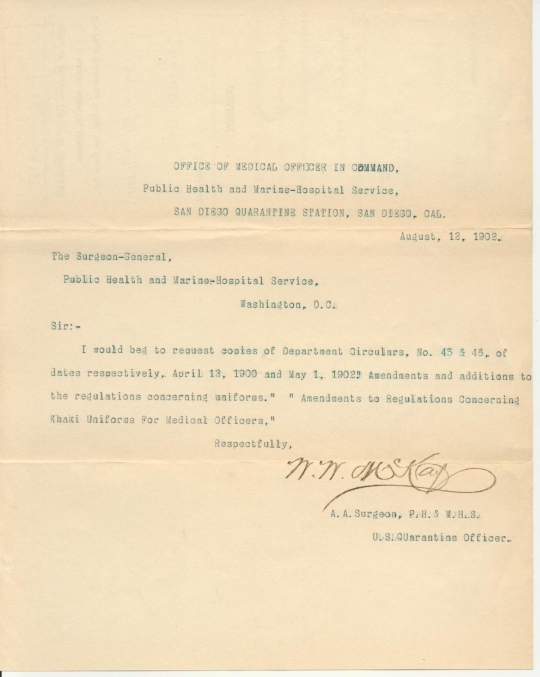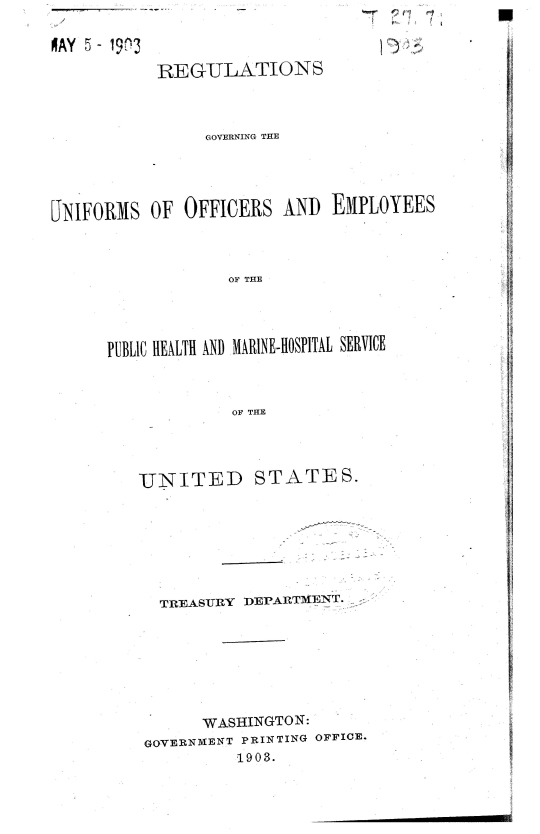
Submitted by LT Russell J. Graham, USPHS
The first time the khaki uniform was regularly authorized for wear by Navy personnel was in 1917. The first Navy khaki uniform was only authorized for wear by the officers assigned to Naval Aviation. The uniform consisted of a khaki single breasted jacket with hard shoulder boards, khaki trousers, and brown shoes. Until recently, the brown shoes were only authorized for wear by officers and chiefs assigned to Naval Aviation.
Historically, the regulations governing the wear of uniforms for officers of the Commissioned Corps of the U.S. Public Health Service (Corps) have paralleled the uniforms and regulations of both the Army and the Navy -- especially during World War II; however, the Corpsí khaki uniform did not follow this established pattern. The first time the khaki uniform was authorized for regular wear was 1902, under Department Circular 45 dated 1 May 1902. The Corpsí khaki uniform was authorized for wear nearly 12 years earlier than the U.S. Navyís khaki uniform. The Corpsí khaki uniform consisted of a single breasted jacket with metal grade insignia, khaki trousers, and tan/brown shoes.
The Corpsí first khaki uniform was phased out and replaced in World War I with the doughboy olive drab uniform. The Corpsí khaki uniform returned just before World War II, based entirely on the Navyís Service Dress Khaki uniform.

